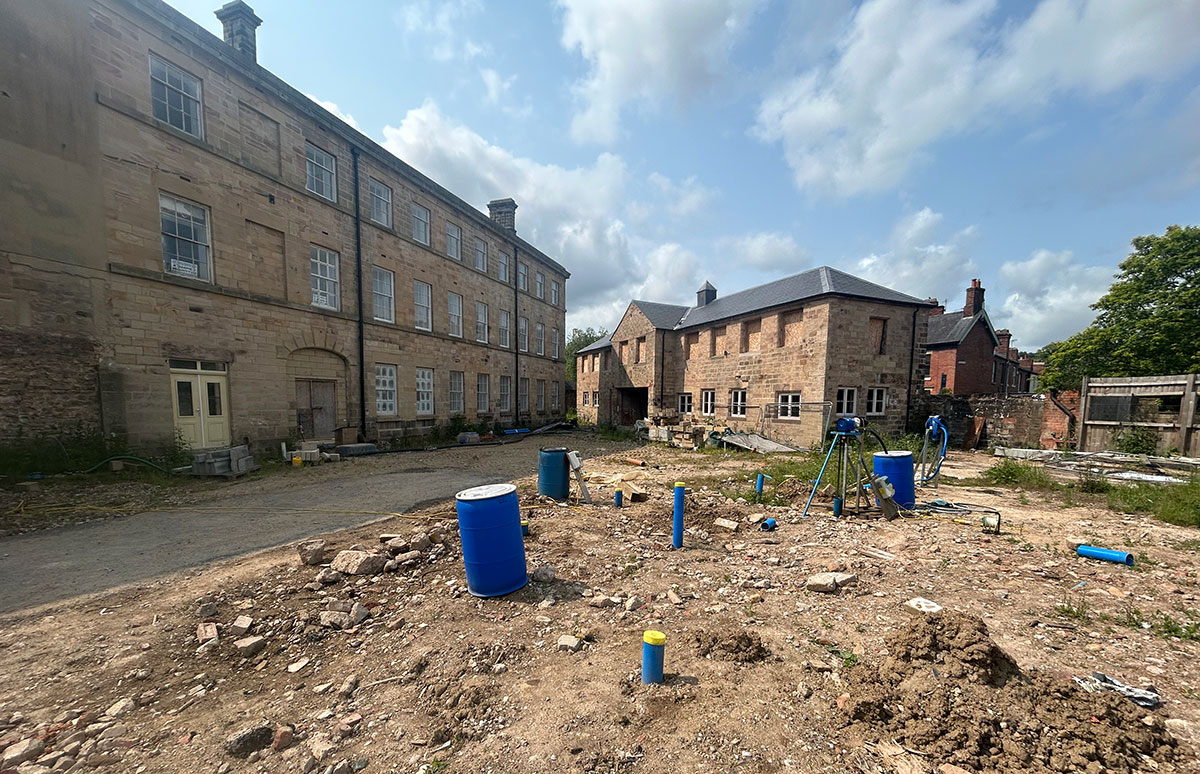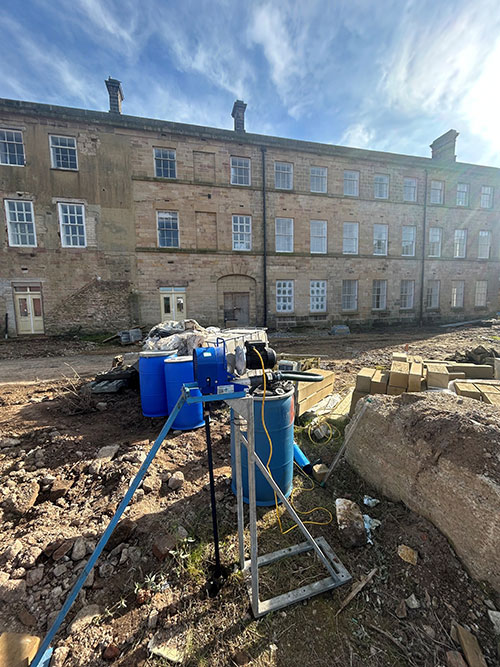
GEA is pleased to report significant progress on a groundwater remediation project, delivered in collaboration with Rake Environmental and under the oversight of the Environment Agency. This initiative follows the approval of a comprehensive remediation strategy and marks a major step forward in restoring a site impacted by hydrocarbon contamination.
The site—a Grade II listed building and former oil refinery—had stood derelict for many years and is now being redeveloped into apartments. Once complete, the transformation will be a warmly welcomed revival for this Derbyshire mill town.
The remedial works began with the installation of a belt skimmer within a monitoring borehole containing a significant amount of free-phase hydrocarbons. This system uses an oil-absorbent belt to selectively separate and remove oil from the groundwater.

Following initial recovery, the project has entered a more advanced phase. Seven 200 mm abstraction wells have been installed across the site to facilitate faster product recovery. Two belt skimmers are currently in operation, actively removing hydrocarbons.
To date, approximately 50 litres of oil have been successfully recovered using this physical abstraction technique.
Despite recent rainfall, groundwater levels within the treatment zone remain noticeably lower than in surrounding areas. It is believed that the contamination is obstructing or redirecting flow by coating soil particles and occupying pore spaces.
In response, the next phase of the remediation will involve the application of RegenOx®, a chemical oxidant that reduces the viscosity of hydrocarbon contaminants. RegenOx® not only breaks down hydrocarbons through chemical oxidation but also helps desorb them from soil particles, increasing permeability and encouraging groundwater to re-enter the treatment zone.
A groundwater pump-and-treat system has now been mobilised to site and will be used to treat contaminated groundwater extracted from these wells via toploading pumps. The water will pass through a three-chamber interceptor and then activated carbon filters to remove hydrocarbon contamination prior to disposal to the foul sewer.

Following the successful removal of free-phase contamination, Oxygen Release Compound (ORC) will be injected to stimulate natural attenuation and promote long-term environmental recovery.
This project showcases GEA’s practical, science-led, and regulatory-compliant approach to contamination management—delivering intelligent, cost-effective solutions to complex environmental challenges.
Related News
June 10, 2025
by Bryan O'Gorman.
GEA is pleased to report significant progress on a groundwater remediation project, delivered in collaboration with Rake Environmental and under the oversight of the Environment Agency.
March 12, 2025
by Marie Patience
Encountering galligu is almost a rite of passage when working in areas like Runcorn, Widnes, St Helens, or near the Sankey Canal. Yet, many are unaware of this unique and often problematic material beyond these regions. Let’s dive into what galligu is, its history, and how it’s managed today.
April 11, 2023
by Juliet Fuller
We worked with Mason Navarro Pledge and client The Bedford Estates to redevelop a site in Bloomsbury at the corner of Ridgmount Street and Store Street.
January 28, 2020
by Marie Patience
Over the past year, our Technical Director Mike Plimmer has delivered a range of presentations at conferences organised by EPUK, RICS and the Geological Society. Mike specialises in the development of risk assessment models for contaminated land remediation and in the classification and re-use of construction waste; he leads GEA’s contaminated land team and has over 30 years’ experience in geotechnical and contaminated land projects.